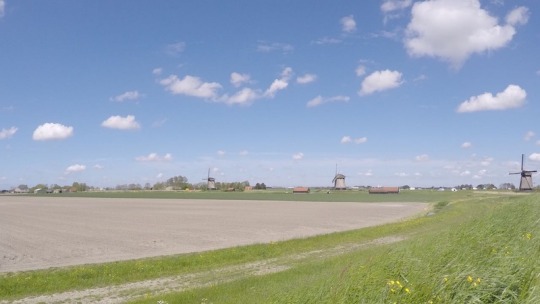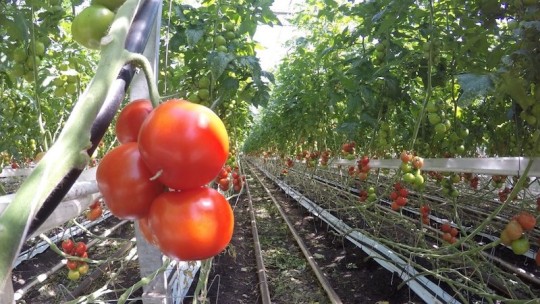Food Value:
We’ve lost our way in sourcing health:
————————————
Unquestionably, the leading feedback I tune in defending the quality & value of food – is it’s too expensive. Product price over Value is the top driver in most US households, proven in the national statistic comparison for food expenditures introducing essay 2 on Evidence-based Agriculture.
Of any possession, including other perishables like time and patience, food should be heaved to the top of the value chain. That said, I strongly believe that it’s only a matter of awareness to potential risks looming in US production before price relinquishes it’s near singular grasp on food buying habits. This theory would seem solidified by a few recent instances where societal backlash changed practice and general awareness quickly. A few years back, the newly minted power of social media expressed a near immediate US remediation of pink slime in beef processing. More recently, our mainstream media reaction to ebola turned a controlled situation into hysteria. I could only speculate to the impact a medical world with pervasive resistance would have on information outlets and thus general awareness significant enough to enact precautionary change.
Better yet, what we lack is not necessarily more gloom and doom, but instead appreciation for the impeccable upside to personal well-being, societal value, family health, and of that of our surroundings that comes from committing a few extra bucks a month dedicated to buying higher-quality foods of diverse value.
Yes, due to virtually no domestic economies of scale in alternative production; lack of equity and risk capital; lack of equal public dollars supporting initiatives dedicated to alternative vs. conventional agriculture; and because products at market are sold at controlled premium niche prices – this higher quality food is more expensive – at least for now. As proven in other countries, most noticeably the Netherlands, it seems a short-horizon before free-markets will connect opportunity with capital to meet new market evolutions and demand. In the information age, the inevitable future of a market continues to prove as consumer desire. But, somehow we remain food ignorant in the US. Somehow we persist in not knowing the backstory of food, despite requiring information of everything else we buy except what’s most important in subsistence.
“Awareness of issues, and known benefits of remediation become equally impetus to move value ahead of price alone”
So, we need a bit of a (or in our case in the US, an increasingly larger) gut-check in conjunction with efforts detailed in improving production capacity and efficiency of sustainable agriculture. This call to arms will equally require social, cultural and personal commitment to the value of food.
It turns out we have a bit of an excuse with this one. We’re pre-wired to be a short-term thinking animal. In the book Immoderate Greatness William Ophlus does a masterful job concisely defining how and why we’re pre-programmed to be these short-horizon thinkers, detailing from origin of homo erectus -to- progressive societies why we haven’t been able to break from preordained assets we took with us from the wild. Once useful, these now prove as limitations when dealing with living with our others in closer confinement. Fast-forward a few millions years and we’re still living with those defense mechanisms that kept our ancestral generations alive.
We’ve seen some glimmers of evolution recently, especially with broad information sharing. A few industries have discovered and cultivated methods that circumvent the natural short-horizon thought-process intrinsic in us all. Most noticeably, at least from my perspective as it’s part of my past career, is the financial retirement industry’s capacity to engage nearly every American, and their employers, to proactively plan for long-term wealth preservation. Timing was ideal, as driving independent retirement plans cleanly replaced faltering pensions. Milestones reached thresholds, and through decades many retirement goals were reached thanks to smart public and private support, and broad GDP growth & expansion.
The quality of food starts with the plants & animals upon which we feed.
The consumption of food that is clean of toxins, higher in nutrients and safer for your community & planet – a higher quality food – should be perceived no differently than your financial retirement plan. Small, habitual and sustained practice is what preserves the health of any portfolio, including personal well-being, and dollar cost averaging is no different if it were diet or 401K. Pay the farmer now or pay the Doctor later – isn’t the whole story anymore. With the cost of modern care, those Doctor medical bills now cost orders of magnitude greater expensive, you lose those essential perishables of time and patience, and mostly it means you got a health problem(s) and poorer quality of life. HR teams explain that once you begin contributing to an employer sponsored 401K program – you won’t even realize it’s coming from your current paycheck. And boy does it compound! Over the years your investment in safe and healthy food grows and reaps great returns, similar to your financials. Spending an extra 20 or 30% on food quickly becomes the best investment you’ll afford yourself and your family. First by delaying your succession plan, the benefit further presents itself in your general wellbeing while stocking away those investments, and to that of your family’s health as well. Lastly, what habitual practice do you want your grandkids to share, and thus pass to generations-of-the-next?

Without parameters, we’ve afforded too much credit to an industry asked to make and source cheap food.
To clarify, I use diet as a noun. Anything we consume is our diet. The process of going on “a diet” perpetuates misconceptions. How we source and produce our sustenance means a great deal more to the value of that food and the affect on your body than does any caloric or fat content. A concept of eating what you want, as long as it’s of higher quality – is the place it began and where to return. This commitment to sourcing develops awareness, engagement and better chronic eating practices that the folks practicing the verb of a diet desire. When the body operates on proper fuel and framework, including minerals, phytonutrients and lack of toxins and contaminants – the overindulging desires of an overfed and undernourished society reduce as hunger subsides not when the belly is full or stuffed, but when the body feels nourished and sustained. Stacking cheap, refined and quick acting sugar energy into everything we eat surely doesn’t help the body or mind. Playing chemical warfare on the body’s ability to regulate hunger vs. desire, sugar in all forms, but especially refined, is mainlined in the Western diet to a point of system shock, inflammation and as an instigator of modern plague. I’ve heard it defined as the starter-drug to the ill-to-pill reactionary approach to healthcare.
If we have hope of collectively empowering healthcare to be electively preventative, we must begin equally on the farms as between the ears.
Deep roots:
No matter from where you hail, we all share food to be much more than caloric. Further, food runs much deeper than what’s often be defined as ethnic. Instead, I think food and that of its production share a common language amongst any successful lineage proven-out with a national, cultural or regional pride. Heritage and food/ diet are nearly interchangeable in most cultural backgrounds represented Stateside.
Instigating and antagonizing this lost cultural heritage via food could happen in nearly every US household. To utilize an aggregate of traditions to sculpt a new national food identity for the US which can learn from so many successful attributes of our diverse citizens. A StoneSoup for health – the basis for making these cuisines unique becomes focus on sourcing only top quality raw materials. This melting pot for food heritage of the US is lofty goal, but one I believe to have potential of great advocacy and support, when promoted and supported appropriately through awareness and production infrastructure.

Currently done primarily in higher-end white tablecloth restaurants of celebrity chefs, the opportunity is to make the farmer the rock-star of food – not the person mixing the ingredient nor turning on the cook-top. High-end restaurant food quality sourced broadly and diversely as means of preventative health has teeth. That said, we do have cultural food heritage broadly digested in the States – but predominately and stereotyped globally as cheap and fast foods. If not super-sized at the table of the franchised restaurant – this lower quality commoditized foodstuff makes up the vast majority of the center aisles of the grocer – the pinnacle example of sacrificing food value for price and profit. The game theory presents this as the best possible scenario as food desires and production requirements evolve. Delving deeper through awareness and appreciation into food’s backstory as a common core competency to reinvigorate each food-heritage through a new national ideology of food. As the Dutch have done with dairy, glass-house horticulture and recently clean meats – owning a positive persona focuses proper attention.
Based on proper financial drivers supporting an innovation economy, improving raw materials in conjunction with informing consumers of the true and accurate value of reducing risk through cleaning a food system of neurotoxins, hormone disruptors and animal steroids will have positive recourse with lasting effects to body, ethos and generation ahead. A roughly painted picture of OneHealth in the US could be cultural or regional pride that celebrates diversity of population – equally. That wonderful nuance that makes us each so unique, but equally as common amongst every Joe seems a bridge built by getting more folks thinking again about food for it’s value to human and environmental health, and developing a shared pride associated to each diverse recipe using nothing but healthier and safer foods of greater value.

